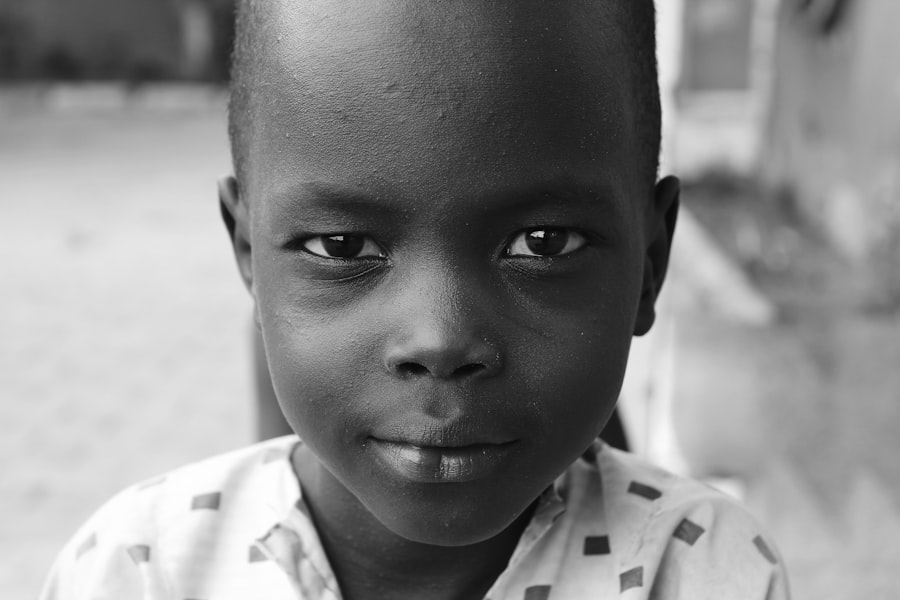Heat stress in chickens is a significant concern, particularly during hot weather. Chicken owners must be able to identify signs of heat stress to ensure their flock’s health and safety. Common indicators include panting, wings held away from the body, reduced egg production, lethargy, and decreased appetite.
More severe symptoms may involve drooping combs and wattles, collapse, or even death. Early detection is crucial for effective intervention and maintaining flock well-being. Certain chicken breeds are more susceptible to heat stress than others.
Chickens with feathered legs or heavy plumage are at higher risk of overheating, as are breeds with smaller combs and wattles. Older birds and young chicks are also more vulnerable to heat-related issues. Understanding these breed-specific and age-related factors allows chicken owners to implement targeted preventive measures.
Recognizing heat stress symptoms in chickens is essential for maintaining flock health. Prompt identification of these signs enables owners to take timely action, potentially averting serious health complications. By remaining vigilant and knowledgeable about heat stress indicators, chicken owners can better protect their flocks during periods of high temperatures.
Table of Contents
- 1 Providing ample shade and ventilation in the coop
- 2 Offering cool treats and electrolytes to keep chickens hydrated
- 3 Adjusting feeding schedules to avoid the hottest parts of the day
- 4 Creating a misting system or shallow pools for chickens to cool off in
- 5 Monitoring the flock regularly for any signs of distress
- 6 Implementing emergency cooling measures if necessary
- 7 FAQs
- 7.1 What temperature is considered a heatwave for chickens?
- 7.2 How can I keep my chickens cool during a heatwave?
- 7.3 What are signs that my chickens are overheating?
- 7.4 Should I change my chickens’ feeding routine during a heatwave?
- 7.5 How can I create shade for my chickens during a heatwave?
- 7.6 Is it safe to use fans or misters to cool my chickens during a heatwave?
Key Takeaways
- Panting, holding wings away from the body, and decreased egg production are signs of heat stress in chickens
- Ensure the coop has plenty of shade and good airflow to prevent heat buildup
- Provide cool treats like watermelon and electrolytes to keep chickens hydrated
- Feed chickens early in the morning or late in the evening to avoid peak heat times
- Set up misting systems or shallow pools for chickens to cool off, and monitor them regularly for distress
Providing ample shade and ventilation in the coop
Providing Ample Shade and Ventilation
One of the most effective ways to prevent heat stress in chickens is by providing ample shade and ventilation in the coop. This can be achieved by positioning the coop in a shaded area, such as under a tree or next to a building, and ensuring that there are plenty of windows or vents to allow for air circulation. Additionally, using reflective materials for the roof of the coop can help to reduce the amount of heat absorbed from the sun.
Coop Orientation and Bedding Material
It’s also important to consider the orientation of the coop – positioning it so that it receives the least amount of direct sunlight during the hottest parts of the day can make a significant difference in keeping the chickens cool. In addition to providing shade and ventilation in the coop, it’s also important to consider the bedding material used. Straw or wood shavings can trap heat and make the coop even hotter, so using materials such as sand or dirt can help to keep the coop cooler.
Additional Cooling Measures
Another option is to use cooling pads or frozen water bottles for the chickens to rest on, which can provide relief from the heat. Overall, providing ample shade and ventilation in the coop is essential for preventing heat stress in chickens, and taking these measures can make a significant difference in keeping the flock comfortable and healthy during hot weather.
Offering cool treats and electrolytes to keep chickens hydrated

During hot weather, it’s crucial to keep chickens hydrated in order to prevent heat stress. One way to do this is by offering cool treats and electrolytes to the flock. This can include treats such as frozen fruits and vegetables, which not only provide hydration but also offer a refreshing snack for the chickens.
Additionally, adding electrolytes to the chickens’ water can help to replace essential minerals lost through panting and sweating, and can aid in maintaining proper hydration levels. It’s important to ensure that fresh, cool water is always available to the flock, as dehydration can quickly lead to heat stress and other health issues. Another way to keep chickens hydrated during hot weather is by providing access to shallow pans or containers filled with water for them to wade in or drink from.
This not only helps to keep them cool but also encourages them to drink more water, which is essential for preventing dehydration. Additionally, offering water-rich foods such as cucumbers and watermelon can help to keep chickens hydrated during hot weather. Overall, offering cool treats and electrolytes, as well as providing access to water for wading or drinking, are important strategies for keeping chickens hydrated and preventing heat stress during hot weather.
Adjusting feeding schedules to avoid the hottest parts of the day
Another important consideration for preventing heat stress in chickens is adjusting feeding schedules to avoid the hottest parts of the day. Feeding chickens during cooler times, such as early morning or late evening, can help to reduce their metabolic heat production during peak temperatures. Additionally, providing smaller, more frequent meals throughout the day can help to prevent overheating, as digesting large meals generates more body heat.
It’s also important to ensure that feeders are placed in shaded areas to prevent feed from spoiling in the heat. In addition to adjusting feeding schedules, it’s important to monitor the amount of protein in the chickens’ diet during hot weather. High-protein diets can increase metabolic heat production, so reducing the protein content of their feed during hot weather can help to prevent overheating.
It’s also important to ensure that feed is stored properly to prevent spoilage, as spoiled feed can lead to digestive issues and other health problems for the flock. Overall, adjusting feeding schedules and monitoring the protein content of their diet are important strategies for preventing heat stress in chickens during hot weather.
Creating a misting system or shallow pools for chickens to cool off in
Creating a misting system or providing shallow pools for chickens to cool off in can be an effective way to prevent heat stress during hot weather. A misting system can be set up near the coop or in the chickens’ outdoor area, and can provide a fine mist of water that helps to cool the air and reduce the ambient temperature. This can be especially beneficial during the hottest parts of the day, when chickens are most at risk of overheating.
Additionally, providing shallow pools or containers filled with water for the chickens to wade in or drink from can help to keep them cool and hydrated. Another option for creating a cooling area for chickens is by using dampened burlap sacks or towels that are hung up in shaded areas. The evaporation of the water from the fabric helps to cool the air around it, providing relief from the heat for the chickens.
Additionally, providing access to shaded areas with good air circulation can help to keep chickens cool during hot weather. Overall, creating a misting system or providing shallow pools for chickens to cool off in are important strategies for preventing heat stress and keeping the flock comfortable during hot weather.
Monitoring the flock regularly for any signs of distress

Identifying Signs of Distress
It’s also important to monitor their water intake and egg production, as changes in these factors can indicate that they are experiencing heat stress. Additionally, checking on individual birds for signs of distress, such as drooping combs and wattles, can help to identify any issues early on.
Environmental Monitoring
In addition to visual monitoring, it’s important to pay attention to the ambient temperature and humidity levels in the coop and outdoor areas where the chickens spend time. This can help chicken owners to anticipate when their flock may be at risk of overheating and take proactive measures to prevent heat stress.
Assessing Cooling Measures
Regular monitoring also allows chicken owners to assess the effectiveness of any cooling measures that have been implemented and make adjustments as needed. Overall, regular monitoring of the flock is essential for preventing heat stress in chickens during hot weather and ensuring their health and well-being.
Implementing emergency cooling measures if necessary
In some cases, despite best efforts at prevention, emergency cooling measures may be necessary to prevent heat stress in chickens during hot weather. This can include bringing chickens indoors to air-conditioned areas if possible, or setting up additional fans or misting systems near their outdoor areas. Providing ice packs or frozen water bottles for them to rest on can also help to reduce their body temperature quickly.
Additionally, offering electrolyte supplements or water with added electrolytes can help to rehydrate chickens that are experiencing heat stress. Another emergency cooling measure is providing access to cool, shaded areas with good air circulation for the flock. This can include setting up temporary shelters or tarps over their outdoor areas to provide relief from direct sunlight and reduce ambient temperatures.
It’s important for chicken owners to be prepared with these emergency cooling measures in case they are needed, as prompt action can make a significant difference in preventing serious health issues for their flock. Overall, implementing emergency cooling measures if necessary is an important part of preventing heat stress in chickens during hot weather and ensuring their well-being. In conclusion, preventing heat stress in chickens during hot weather requires a combination of proactive measures and regular monitoring of the flock.
By understanding the signs of heat stress and taking steps such as providing ample shade and ventilation, offering cool treats and electrolytes, adjusting feeding schedules, creating cooling areas, monitoring the flock regularly, and implementing emergency cooling measures if necessary, chicken owners can help to ensure the health and well-being of their flock during hot weather. It’s crucial for chicken owners to be vigilant and proactive in preventing heat stress, as early detection and intervention can make a significant difference in keeping their flock safe and comfortable during hot weather.
If you’re looking for tips on how to keep chickens cool during a heatwave, you may also be interested in learning how to care for goslings. Check out this article for helpful information on raising and caring for young geese. Understanding the needs of different poultry can help you better care for your entire flock during extreme weather conditions.
FAQs
What temperature is considered a heatwave for chickens?
A heatwave for chickens is typically considered to be when temperatures rise above 90 degrees Fahrenheit (32 degrees Celsius) for an extended period of time.
How can I keep my chickens cool during a heatwave?
To keep chickens cool during a heatwave, provide plenty of shade, access to cool water, and good ventilation in their coop. You can also use misters, fans, or frozen treats to help lower their body temperature.
What are signs that my chickens are overheating?
Signs that your chickens may be overheating include panting, holding their wings away from their bodies, reduced egg production, and lethargy. It’s important to monitor your chickens closely during a heatwave to ensure they are not suffering from heat stress.
Should I change my chickens’ feeding routine during a heatwave?
During a heatwave, it’s a good idea to adjust your chickens’ feeding routine. Offer cool, watery treats such as watermelon or cucumbers, and consider feeding them during the cooler parts of the day to reduce the heat generated from digestion.
How can I create shade for my chickens during a heatwave?
You can create shade for your chickens by using tarps, umbrellas, or natural shade from trees or shrubs. It’s important to ensure that the shade is well-ventilated and does not restrict airflow in the coop or run.
Is it safe to use fans or misters to cool my chickens during a heatwave?
Fans and misters can be safe and effective ways to cool chickens during a heatwave, as long as they are used properly. Ensure that the misters do not create a damp environment that could lead to respiratory issues, and that fans are positioned to provide good airflow without causing drafts.
Meet Walter, the feathered-friend fanatic of Florida! Nestled in the sunshine state, Walter struts through life with his feathered companions, clucking his way to happiness. With a coop that’s fancier than a five-star hotel, he’s the Don Juan of the chicken world. When he’s not teaching his hens to do the cha-cha, you’ll find him in a heated debate with his prized rooster, Sir Clucks-a-Lot. Walter’s poultry passion is no yolk; he’s the sunny-side-up guy you never knew you needed in your flock of friends!







